If you grow pepper plants from seed, you’ll most likely need to use a grow light to get the plants started. Grow lights have come a long way in recent years, from bulky and loud lights to slim, silent LED lights. In this article, we’ll discuss some of the very best grow lights for pepper plants.
While these lights were chosen with growing peppers in mind, they will also work well for growing almost any sunlight-loving plants. Think tomatoes, other veggies, herbs and even decorative shrubs and flowers.
We have experimented with several grow light setups and have chosen a variety of great options depending on your situation. We’ll cover cheap lighting for small setups, all the way to more powerful lights for growing many plants.
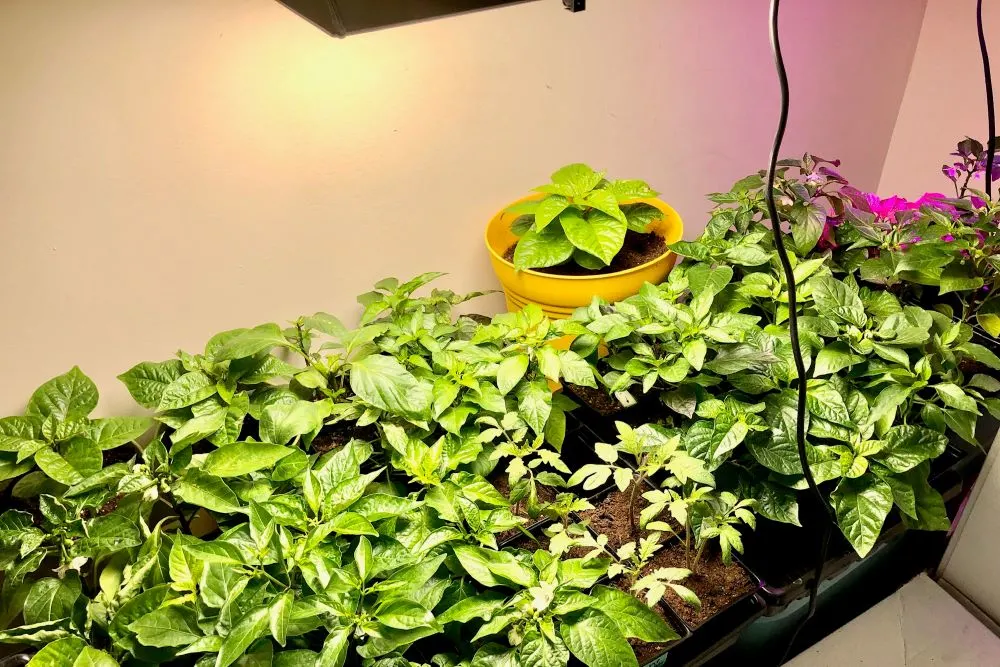
LED Grow Lights For Peppers
There are a wide range of LED grow light options for growing peppers. This is our preferred type of grow light thanks to the cool running temperature, the slim designs, and the low maintenance.
LED lighting elements can last for thousands of hours, making them the perfect light source longevity. Considering your lights may run for 16 hours a day, all year long, having a long-lasting light is essential.
Here, we have rounded up some of our top LED grow lights for peppers. They range in price and light output, so you can pick one that fits your needs.
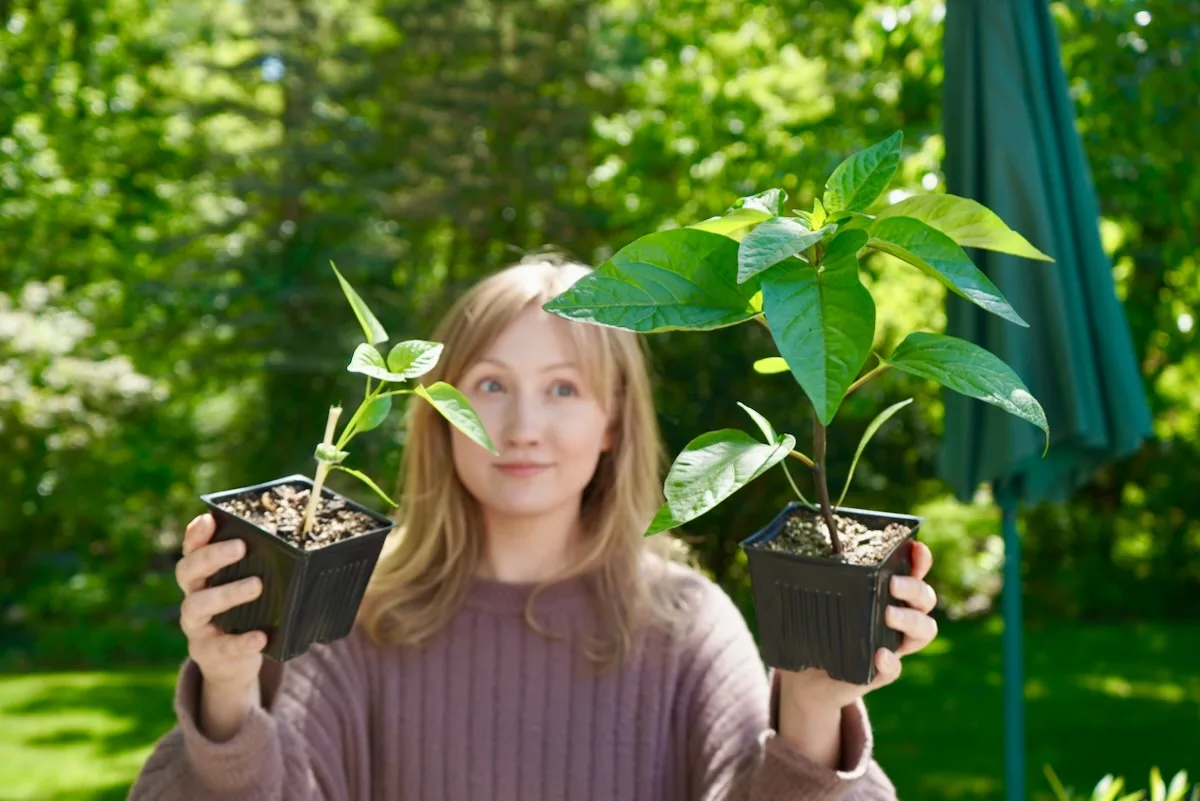
Viparspectra LEDs (Excellent Value)
If you are looking for a good budget friendly option, the VisparSpectra Pro Series has great output and efficiency for the price point. Usually priced well below $100, the P1000 light is a good way to get the best bang for your buck in the LED world.
More and more LED light brands are popping up, claiming to offer better and better grow lights for less money. While many budget options will offer a ‘get what you pay for’ situation, the Pro Series units deliver real results for a great price.
See our full review of the ViparSpectra P1500 here.
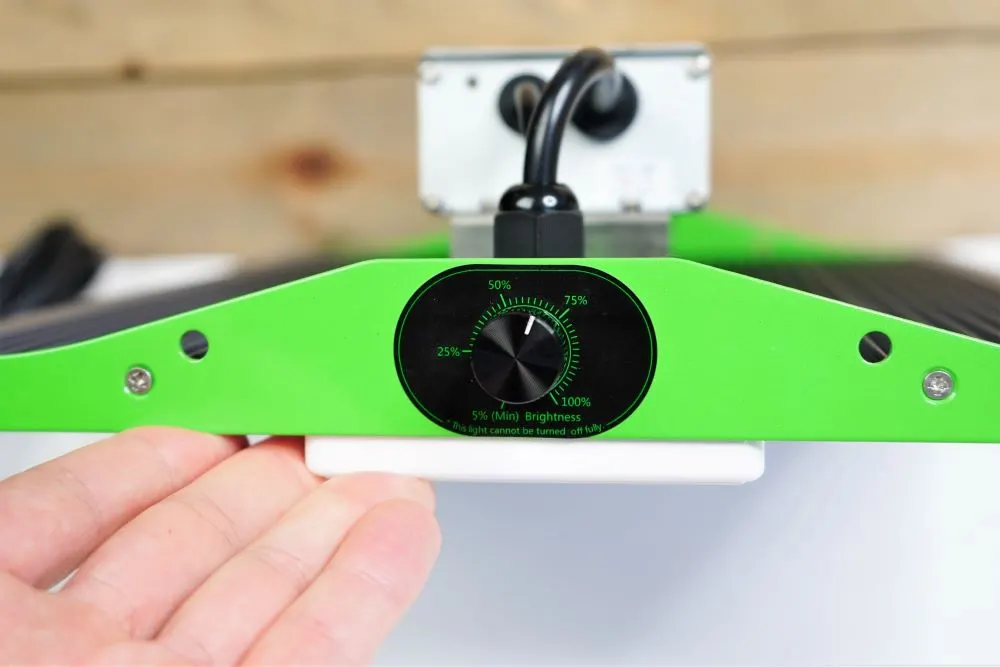
ViparSpectra was known for ‘blurple’ grow lights when they were a more popular choice. They have now begun to sell quantum board lights with some handy features. Namely, this light is dimmable, and comes with a built-in heat sink. This allows the LEDs to run cooler, in theory slowing down the light decay over time.
While the quality of the LEDs and/or driver is potentially below average, if price is your main objective, this full spectrum LED might be a great start for growing your peppers.
For a slightly larger grow area, step up to the P1500 or the P2000 lights for additional power. These have the same features as the p1000, but with more coverage.
See all ViparSpectra P-series grow lights here.
Spider Farmer SF600 (Best For Seed Starting)
If seed starting is your main goal with your grow light, the Spider Farmer SF600 (and SF300) are great options. Both have a long, narrow coverage, perfect for lighting up your seed starting shelf.
Spider Farmer is a well-known LED maker, using some of the world’s best quality components. Our SF600 has been perfect for our 2×4 foot area on our grow shelf.
There are a couple drawbacks, namely the lack of a dimmer knob, and the hanging hardware. The light essentially comes with two cables attached to either side, and two wing nuts to fasten the cable to something. This is versatile, but I wish it were a bit easier to hang and adjust the light’s height.
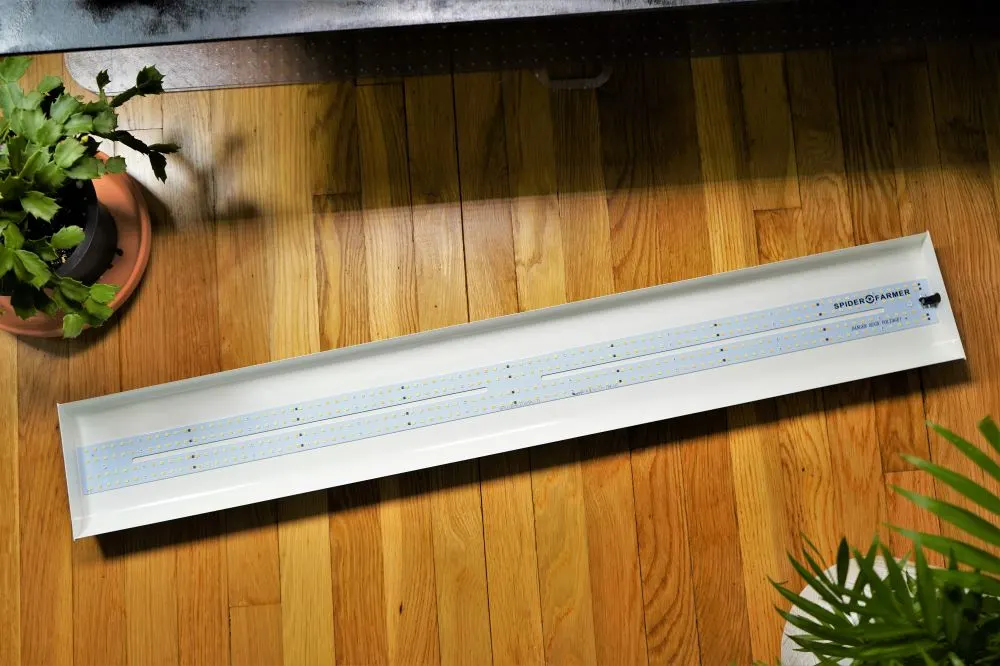
The light is also not water resistant (the LEDs are not coated with a protective film like other lights). This can be a problem if you are misting your peppers regularly, but so far we have not had any issues.
Overall, the SF600 is a lightweight, low-profile LED that is efficient and silent. For seed starting, it’s hard to to imagine a better option for the price.
Vivosun VS Series
Vivosun recently sent us one of their latest grow lights to review and it is impressive. They also have a lineup of innovative indoor growing products so you can build a full setup from scratch.
If you are planning to grow your peppers indoors through to harvest, this LED is a great option, start to finish. The more powerful output is plenty to produce fruits.
Not only are LEDs quiet and slim, but they can be carefully tuned to produce a highly usable spectrum of light. Vivosun has dialed in all of the important light wavelengths for optimal plant growth.
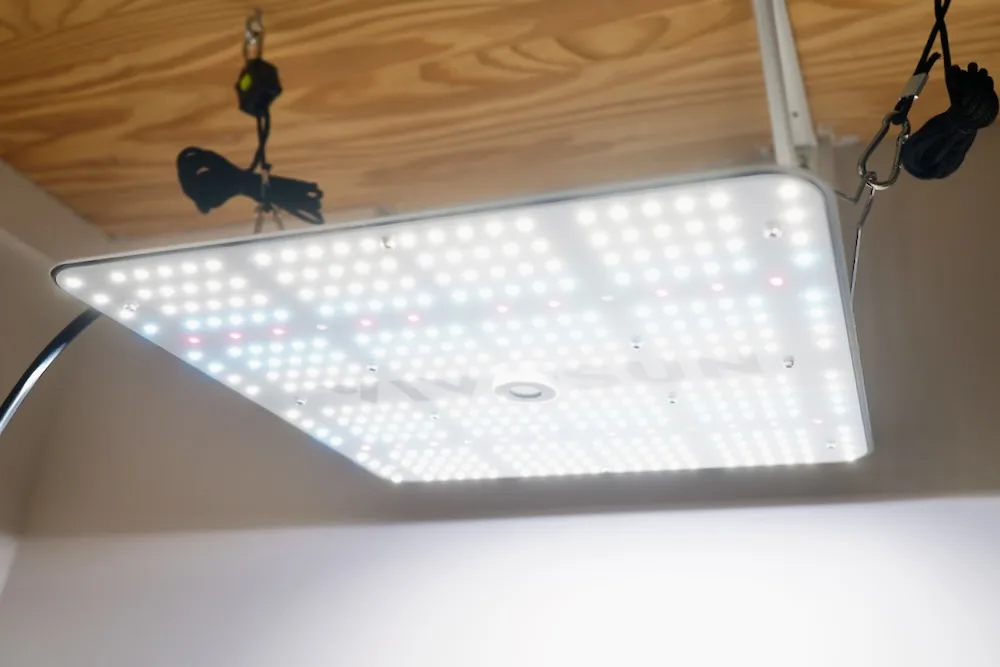
This unit is also silent, meaning no fan is necessary in most grow situations. However, if you are growing in an indoor tent, you may want to monitor the temperature, as the light does produce some warmth.
*Though most LED manufacturers tout long runtimes, output and efficiency does diminish over time. Expect an LED light to have approximately 80% of its original efficiency and output after about 25,000 hours of runtime.
Read more about our experience with the Vivosun VS1500 grow light here.
Fluorescent Lights For Peppers
Fluorescent lights offer a similar, cool running temperature at a lower price point. These lights tend to be a bit more bulky, but if budget is your main concern, they may be the right fit for your pepper grow light.
T5 Fluorescent Lamps
While LEDs have a lot to offer, the T5 fluorescent bulb has long been touted as one of the great grow light options. They offer low heat and high efficiency, but lack in the endurance category.
Pros:
- Budget friendly
- Runs cool
- Efficient
Cons:
- Not long lasting
- Must be closer to plants
Coverage Area:
- Variable (based on size & number of bulbs)
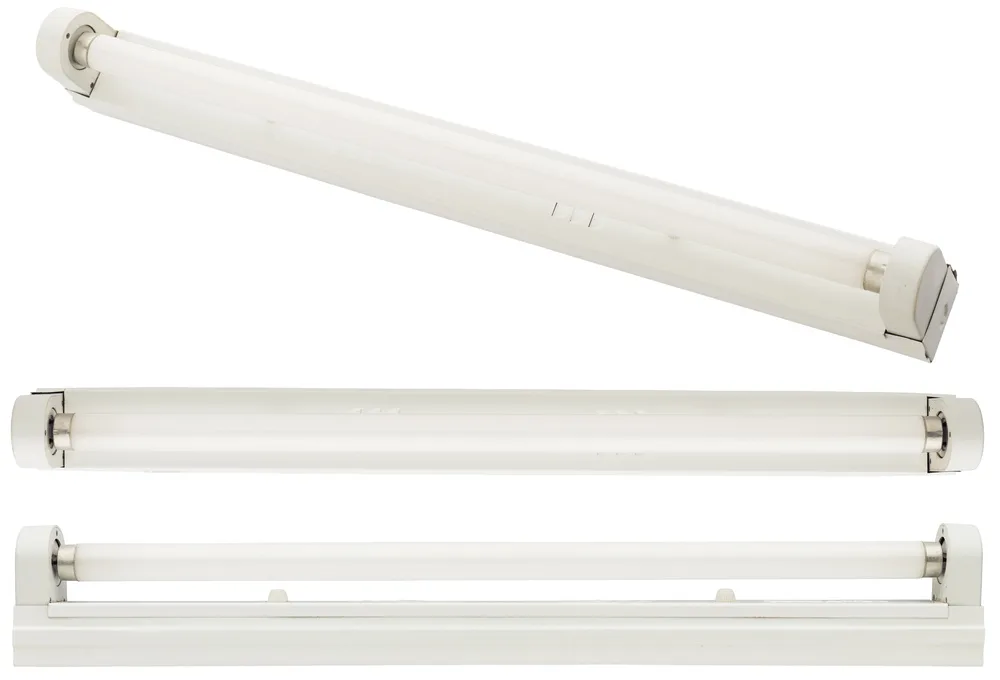
Fluorescent bulbs need to be placed closer to your plants since the light output scatters quickly as the distance from the light is increased. This can be viewed as a good or a bad thing, depending on your grow setup. With a dimmable LED, you can keep the light in a fixed position.
Tip: Try to find a light with multiple tube slots and use one warm tube (like this) and one cool tube (like this). This will offer a much better spectrum of light for your pepper plants to use.
If you can swing the price difference, we recommend going with an LED light for growing peppers over fluorescent bulbs. Replacement bulbs are not cheap, and many buyers complain of them burning out in less than 1 year of use.
While this will vary based on the quality of the light and the duration of daily use, we just prefer the sound of 25,000-50,000 hours of runtime!
More About Grow Lights
If you want a little more info about picking a grow light, here are a couple important topics.
Color Temperature
Color temperature determines the appearance of light from a grow light in the visual spectrum. In other words, does the light appear more red, or more blue?
Color temperature is measured in Kelvin, and ratings for grow lights typically range from 3000K-6500K. The lower the number, the more red-shifted the light will appear.
Color temperature is also associated with the wavelengths of light. This is measured in nanometers, and visible light ranges from about 400nm to 700nm.
If you want to use an LED grow light year-round, you might want to find a light that has some red (640-700nm), blue (450-500nm) and white LEDs. This will prevent the need to change the color of the light during different plant growth stages.
Other lights provide an option to change the color temperature at will. This usually means simply turning on or off some of the panel’s LEDs, either blue or red shifted diodes.
Why does it matter?
So why should this matter for growing plants? Many plants, including peppers, will change growth patterns based on the color temperature of light. Higher color temperature light promotes healthy leafy (vegetative) growth, while warmer temperature light will promote fruiting.
This means that, if you are just growing lettuce, you might want to look into lights in the 5000-6000K range. However, if your goal is to grow fruit-bearing plants (like peppers), you’ll need more red light during the fruiting stage.
Some grow lights will allow you to change the type of light that is emitted, so be sure to review a wavelength chart to see what the light emits.
PPF and PPFD
When looking at various grow lights, you will often see ratings for PPF and PPFD. These measure photosynthetic photon flux and photosynthetic photon flux density, respectively.
PPF measures the amount of photosynthetic active light that a light emits in all directions. This measurement only considers light in wavelengths between 400-700nm (the wavelengths used by plants to photosynthesize).
PPFD measures the amount of photosynthetic active light that reaches a surface. This is essentially a measure of how efficient the light is at providing usable light to your plants.
While most LEDs are highly efficient, they can still vary significantly. High-priced, professional lights are priced high for a reason, while lower cost options tend to scatter more light.
Indoor Grow Tents For Peppers
If you want to grow your peppers indoors over the winter, you might want to invest in a grow tent. These tents are fully enclosed, reflective zip-up tents in which you can grow plants. They usually contain holes for ventilation in order to provide fresh air to your plants.
While the setup is more complex than a simple seed starter tray, the benefit is that the light is enclosed. This means that you won’t have bright, glaring light in your home all year. It also offers a superior, reflective interior surface so that more of your light’s energy can reach the pepper plant’s foliage.
Grow tents:
- Spider Farmer tents (many size options)
- Mars Hydro tents
I hope that this article gave you some insight into the best grow lights for pepper plants. It seems like LED lights are the future for high-endurance, reliable and efficient lighting. Good luck with your new pepper plant grow light!
Let us know how things are going with your indoor plants in the comments below.
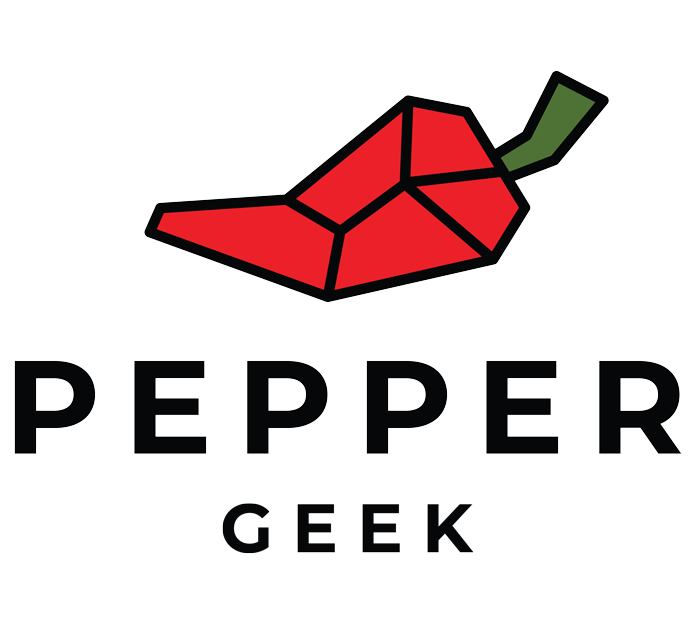
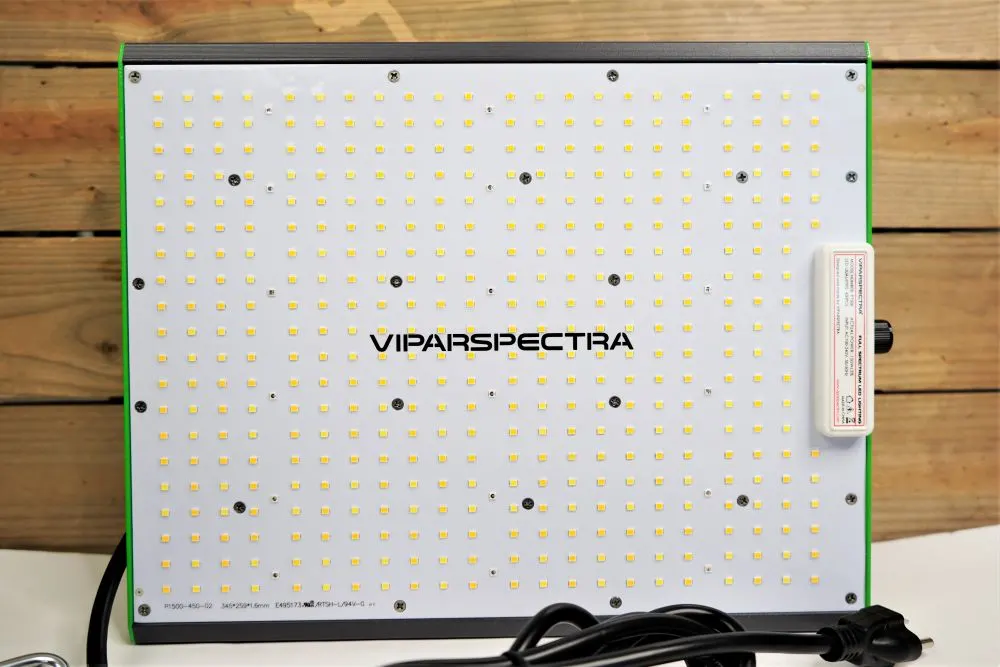
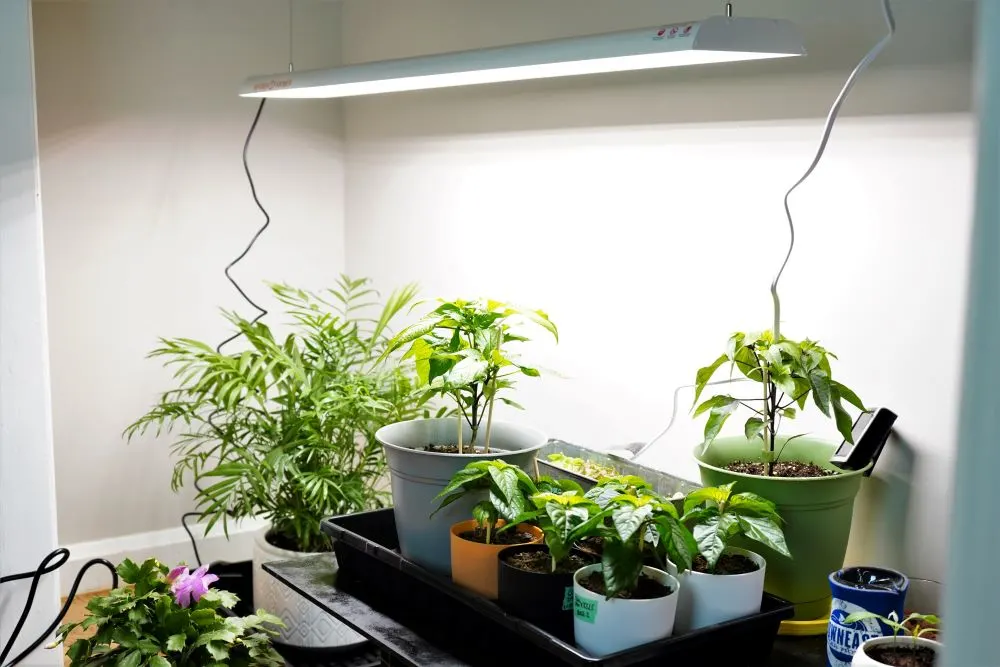
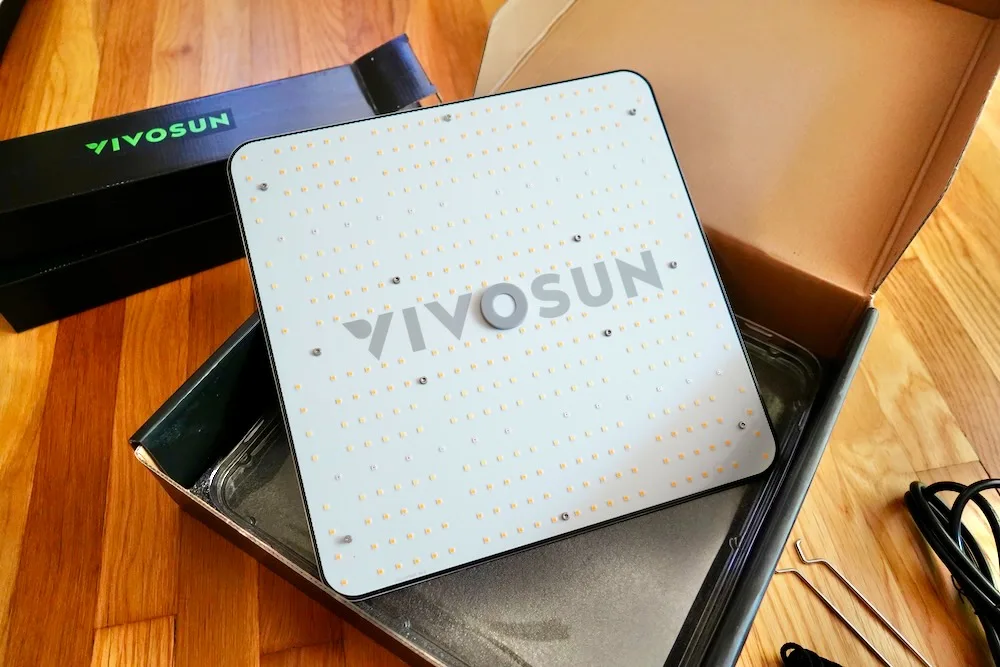

Angel
Tuesday 9th of April 2024
Hey Kevin I don't have a good budget at all but I found this grow light that seemed pretty good will it be able to grow and flower peppers ? https://www.amazon.com/gp/aw/d/B0C1SKMZMB/ref=ox_sc_act_image_6?smid=A1U6SLB6T92CWN&psc=1
peppergeek
Friday 19th of April 2024
This should work for growing seedlings, but probably not enough to get much of a harvest. It's worth a shot if you don't have the option to grow outdoors. If you can stretch the budget a bit, the Viparspectra P1000 is a much better option: https://www.amazon.com/dp/B083JVXHF6 and can be used to grow plants through fruiting.
Lyn
Sunday 24th of March 2024
I want to say your articles have saved my peppers. The aphids do multiply very fast and I couldn't keep up to their reproduction. I am using the castle soap with peppermint mixture and keeping my eyes open for and stragglers. They are just flowering and I was sad to see the leaves eating. It broke my heart. Thanks again the the recipe.
Dan
Wednesday 6th of March 2024
How many hours a day is recomended for grow lights on bell pepper plants
peppergeek
Wednesday 20th of March 2024
Usually between 14-16 hours for starting seedlings indoors.
Julie
Sunday 4th of February 2024
Thank you for the reviews and information. As a result, I just purchased the VS2000 from Amazon. I am excited to upgrade my current fluorescent grow lights to a solution that will provide better coverage, light source and ability to adjust as needed!
pepper nerd
Wednesday 6th of December 2023
What height do you recommend for 50W LED lights
peppergeek
Monday 11th of December 2023
It really depends on the spread of the LEDs, but I would guess around 12-18". Try to find the owner's manual to see if there are recommended hanging heights.